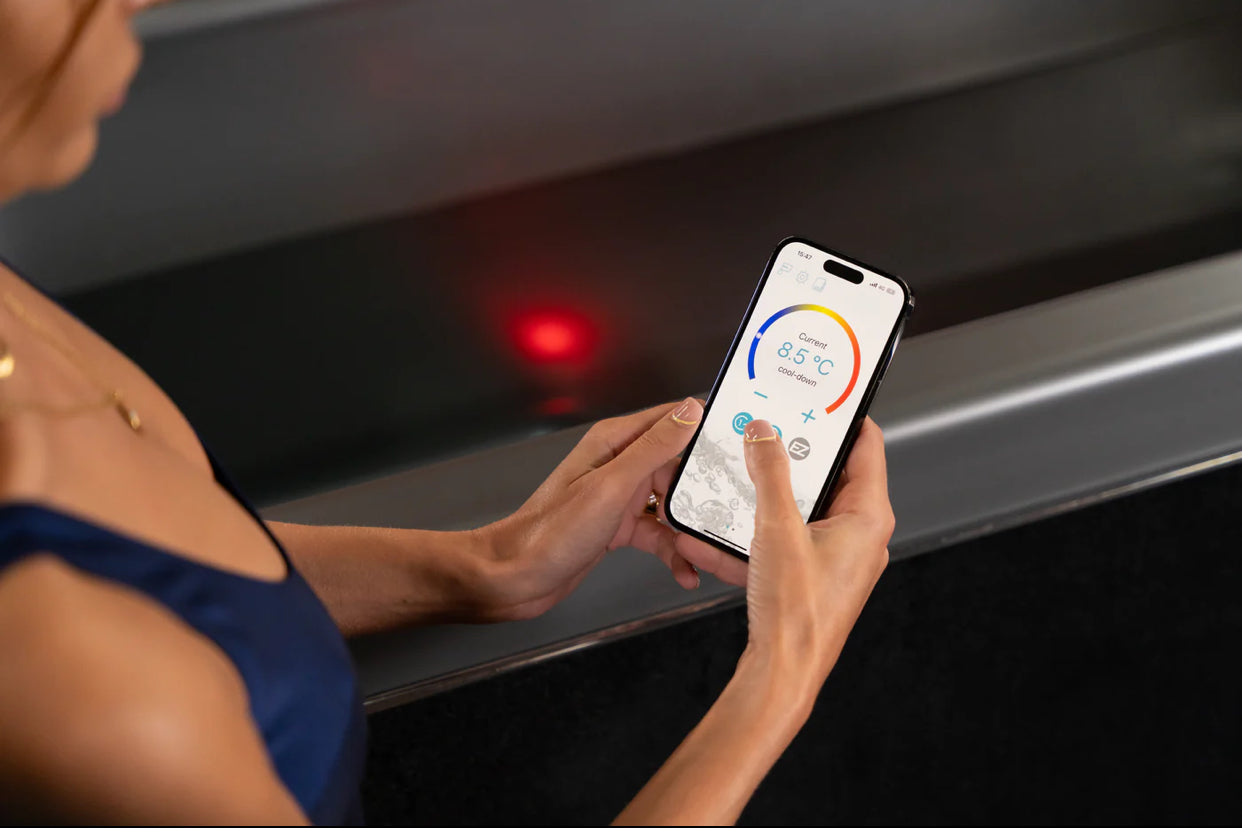Yes, 5 minutes in a Cold Plunge or Ice Bath Tub is usually enough! Think you’ll freeze solid? Don’t worry! This guide explains why 5 minutes hits the sweet spot, how to do it safely, and why your Cold Plunge Tub routine doesn’t need to be extreme.

1. The Efficacy of a 5-Minute Cold Plunge
1.1 Is 5 Minutes the Sweet Spot for Cold Plunge Duration?
A 5-minute Cold Plunge is usually a perfect goal.
It delivers real benefits without pushing beginners too hard.
Advanced users might choose longer sessions, but 5 minutes is safe and effective.
It strikes a balance between results and comfort.
1.1.1 Beginner vs. Advanced Cold Plunge Times
Beginners should start with 1–3 minutes.
As you adapt, you can progress to 5 minutes comfortably.
Experienced plungers might extend to 5–10 minutes, but longer isn’t always better.
It’s essential to listen to your body.
1.1.2 What 5 Minutes Achieves: Immediate and Lasting Effects
Five minutes triggers vasoconstriction, improves circulation, and reduces inflammation.
It also prompts endorphin release for a mood lift.
With regular sessions, you’ll see better recovery and resilience.
You don’t need marathon plunges for these benefits.
1.1.3 The Power of Consistency: More Important Than Single Session Length
Frequent short sessions are better than rare long ones.
Consistency helps build mental and physical adaptations.
Aim for multiple brief plunges each week.
Your Cold Plunge Tub routine should be practical and sustainable.
1.2 The Weekly Cold Exposure Guideline: Aiming for 11 Minutes
Studies suggest about 11 minutes total cold exposure weekly is effective.
This can be split into three or four shorter plunges.
Spacing them out improves safety and benefits.
No need to do it all at once.
1.2.1 How to Accumulate Benefits Across Multiple Sessions
Try 2–4 minute plunges a few times each week.
Consistency helps your body adapt without shock.
Short, frequent dips work better than long, occasional ones.
This reduces risk while delivering results.
2. Unlocking the Broad Benefits of Cold Water Immersion
2.1 Physical Recovery and Performance Enhancement
Cold plunging helps with muscle recovery.
It eases soreness and reduces post-exercise inflammation.
Athletes use Ice Bath Tubs to recover faster.
A Cold Plunge Tub session also boosts circulation.

2.1.1 Reducing Muscle Soreness and Inflammation
Cold water causes blood vessels to constrict.
This limits swelling after workouts.
It helps ease soreness quickly.
You’ll bounce back faster.
2.1.2 Boosting Circulation and Metabolism
Alternating cold and warmth improves circulation.
Cold exposure can slightly raise metabolism.
It challenges your body to adapt.
Regular sessions improve overall blood flow.
2.1.3 Supporting Athletic Performance
Athletes rely on Cold Plunge routines.
Regular short sessions aid muscle repair.
They support higher training intensity.
Better recovery leads to better results.
2.2 Enhancing Mental Health and Overall Well-being
Cold plunging isn’t only for the body.
It reduces stress and builds mental resilience.
Many use it to boost daily mood.
It’s a holistic wellness tool.
2.2.1 Mood Enhancement and Stress Reduction
Cold triggers endorphin release naturally.
It offers stress relief without medication.
You’ll feel calmer even on hard days.
It’s an instant mood lift.
2.2.2 Improving Focus, Alertness, and Energy Levels
Cold plunges wake up your system.
They increase mental clarity and focus.
A quick Ice Bath Tub dip beats caffeine.
You’ll feel alert and energised.
2.2.3 The Impact on Sleep Quality
Cold plunges can improve relaxation.
They lower stress and help you unwind.
Cooling the body can promote deeper sleep.
Ideal if done earlier in the day.
3. Your Practical Guide to Cold Plunging
3.1 Getting Started with Cold Plunge Therapy
Begin carefully to avoid shock.
Starting slowly helps make it sustainable.
Your Cold Plunge should fit your comfort level.
Plan your routine mindfully.
3.1.1 Recommended Temperatures for Novices
Start around 10–15 °C (50–59 °F).
Colder water is more challenging, so ease in.
Use a thermometer in your Ice Bath Tub.
Know your personal limits.
3.1.2 Gradual Acclimatisation and Progression Strategies
Begin with shorter plunges of 1–2 minutes.
Extend duration gradually as you adapt.
This approach reduces discomfort.
It helps you handle the cold with confidence.
3.2 Essential Safety Considerations and Common Mistakes
Always prioritise safety when plunging.
Be aware of risks before starting.
Design your routine to avoid accidents.
Avoid these common mistakes.
3.2.1 When to Consult a Healthcare Professional
If you have heart conditions, seek medical advice.
Cold shock can put extra strain on the body.
Professional guidance keeps you safe.
Better safe than sorry.
3.2.2 Avoiding Common Errors
Check temperature before entering.
Never plunge alone for safety.
Avoid staying in too long.
Remain mindful of your limits.
3.2.3 Proper Post-Plunge Warm-up Techniques
Warm up slowly after exiting.
Use towels, layered clothing, and warm drinks.
Skip hot showers immediately to avoid shock.
Let your body readjust naturally.
3.3 Cold Plunge vs. Cold Shower: Which is Right for You?
Both methods offer real benefits.
Cold Plunge Tubs allow full-body immersion and precise temperature control.
Cold showers are easier to do daily.
Choose what suits your routine best.
3.3.1 Comparing Benefits and Limitations
Cold Plunge Tubs offer controlled, deeper cold exposure.
Ice Bath Tubs deliver consistent results for athletes.
Cold showers are convenient but less intense.
Each method has its role in your plan.
Conclusion
A 5-minute Cold Plunge really is enough for powerful results.
Stay safe, focus on consistency, and tune in to your body.
Make cold therapy a personal ritual and enjoy the rewards.
Takeaways: Start slow. Stay regular. Embrace the chill confidently for lasting physical and mental benefits.






